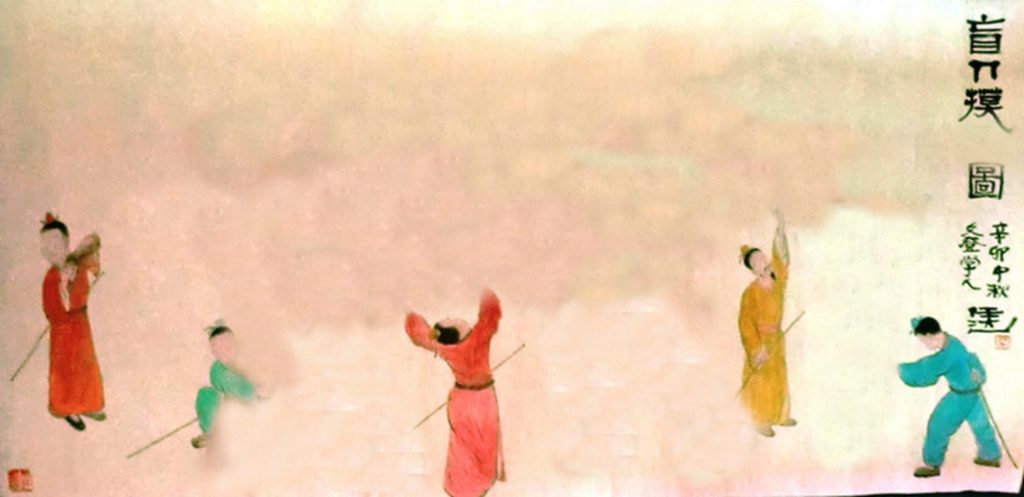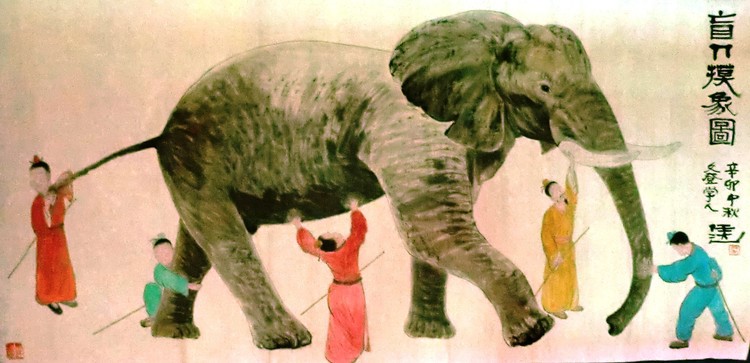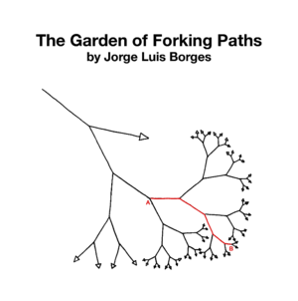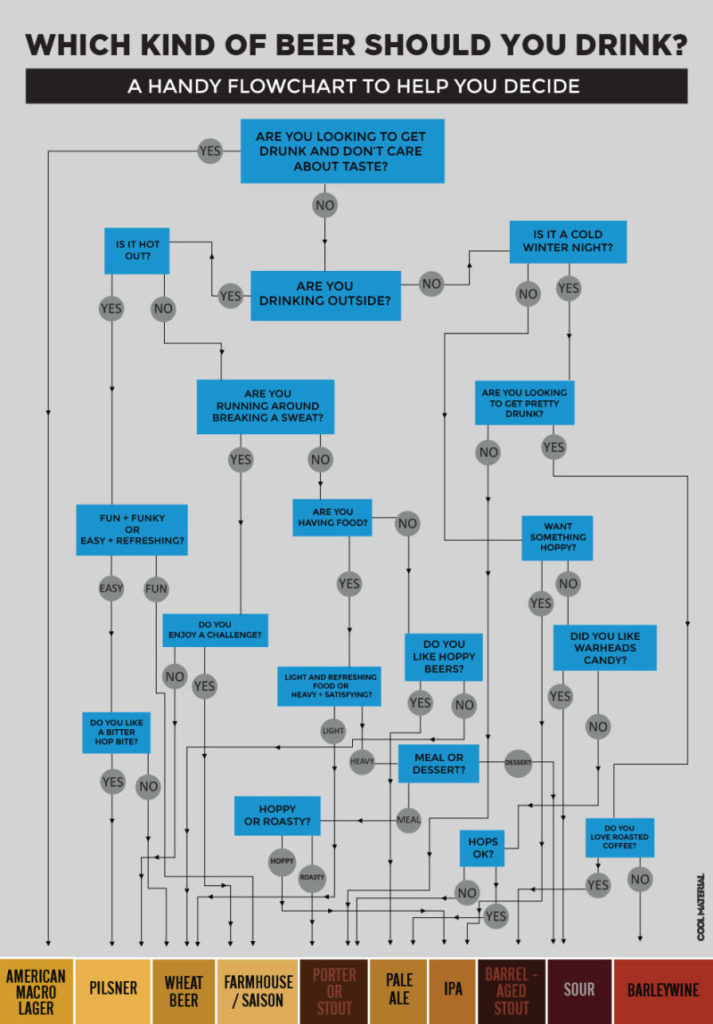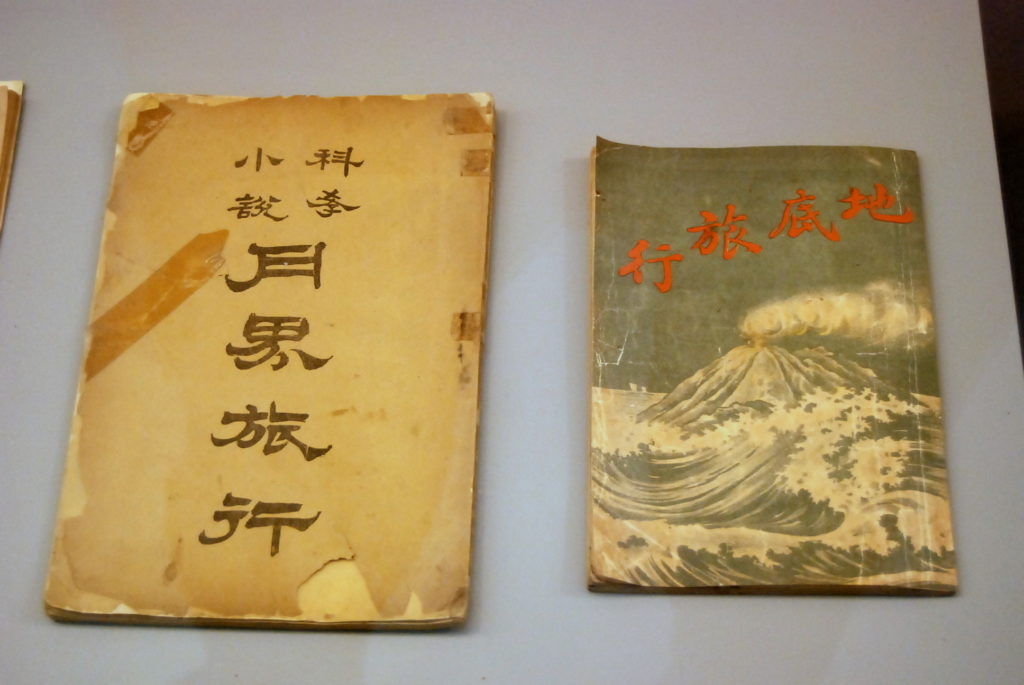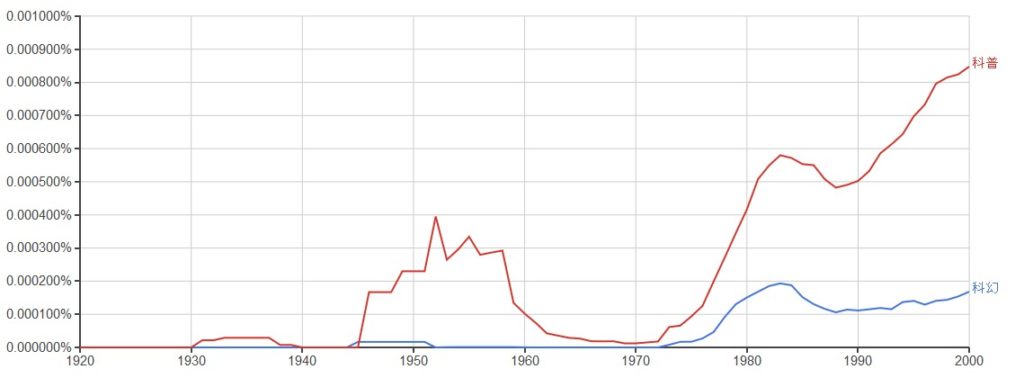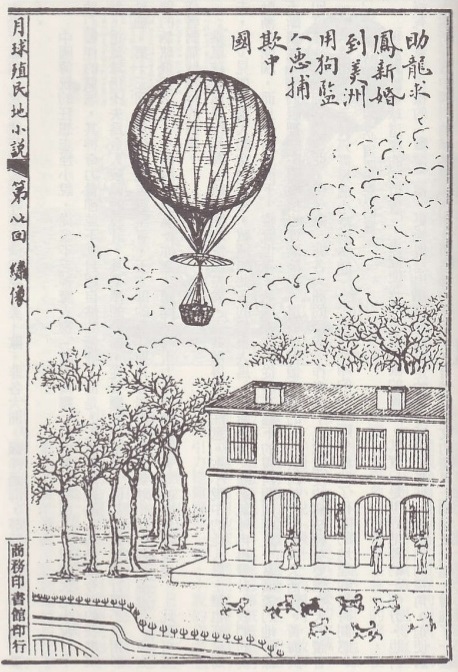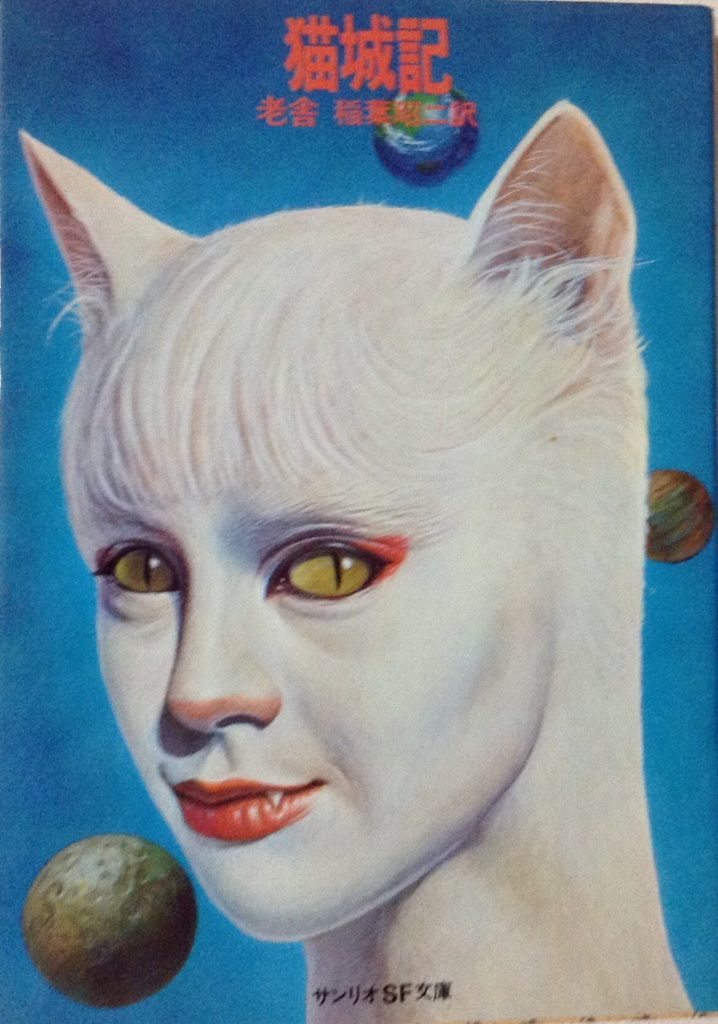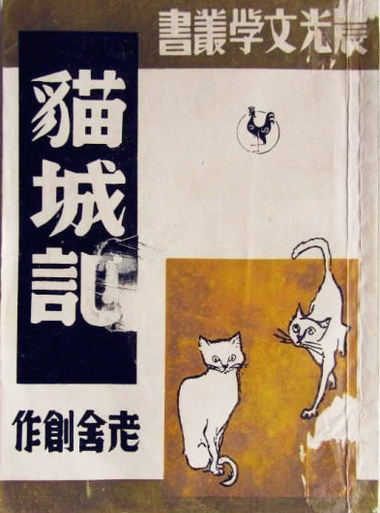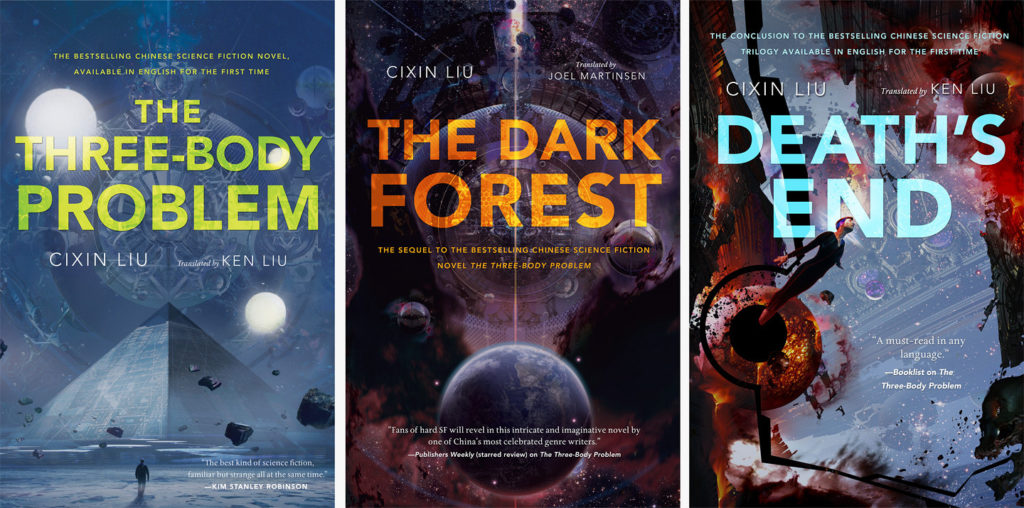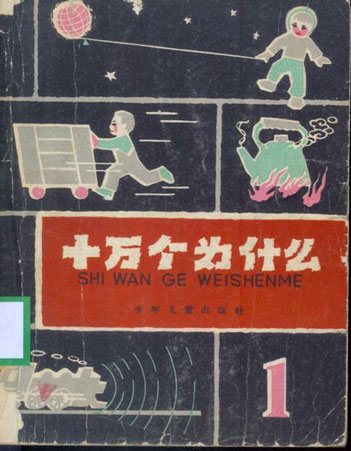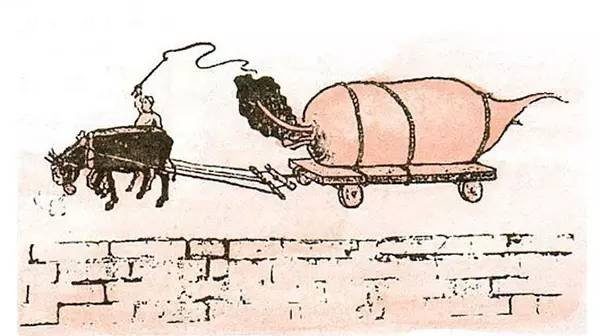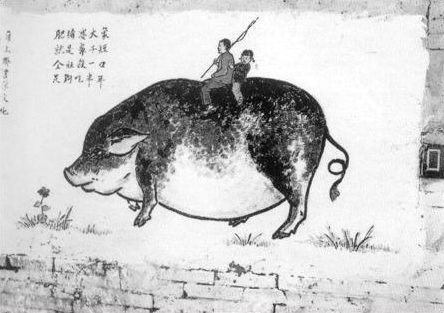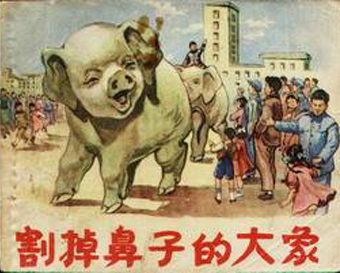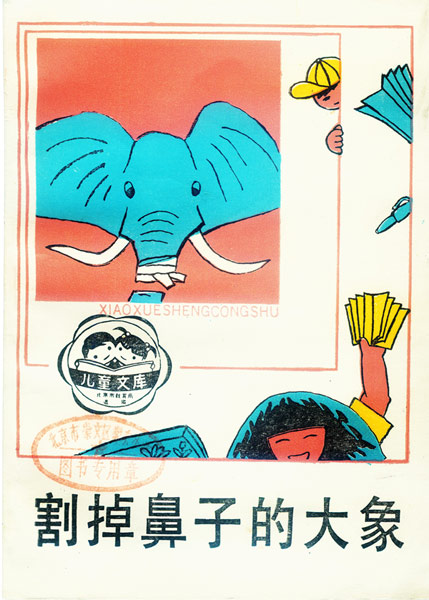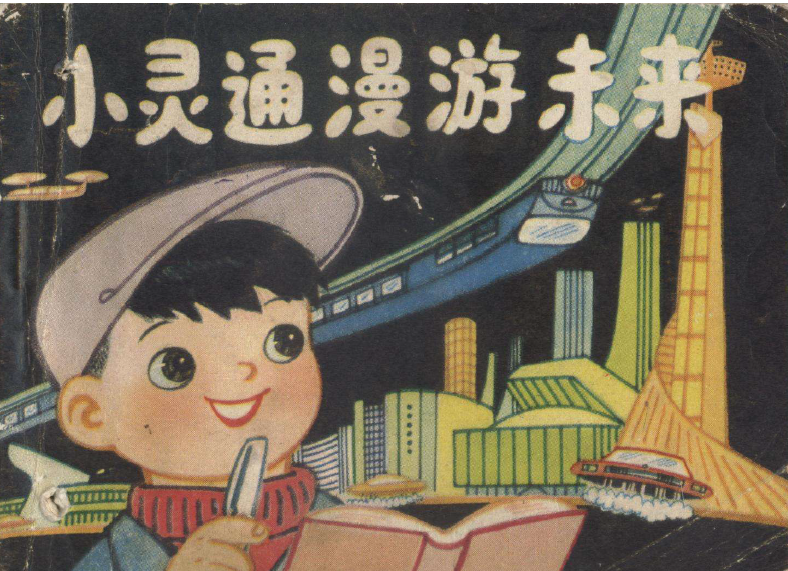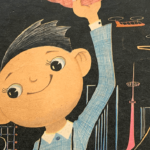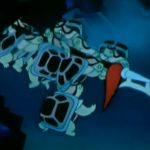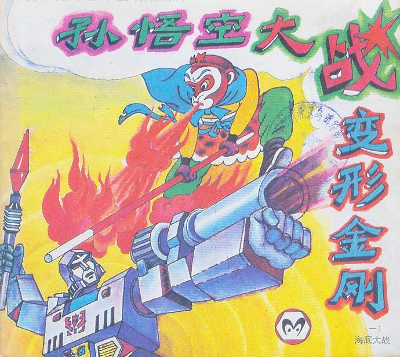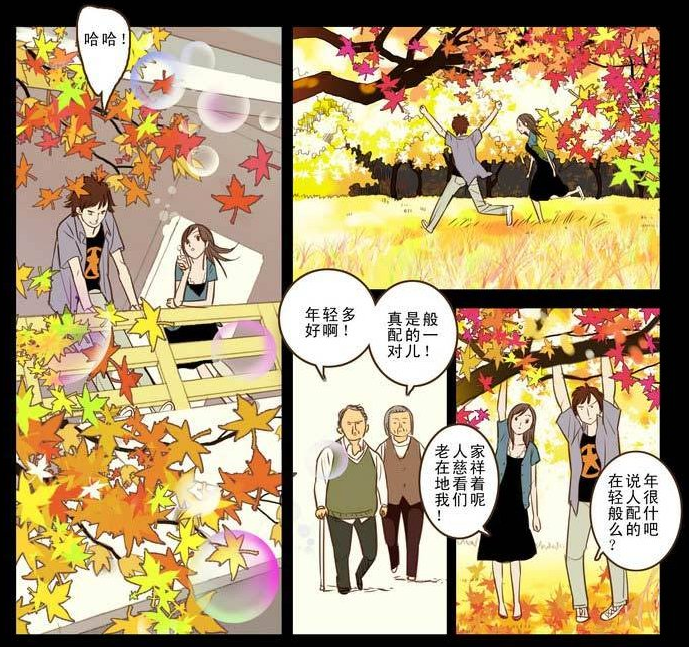The following is based on a short talk on Chinese science fiction which I had the honor of presenting to the CHIN 40: Popular Culture in Modern Chinese Societies course at UCLA on February 16, 2017, at the invitation of Micheal Berry. I had originally planned on posting this a couple of weeks after giving the talk–it seems a little superfluous to be talking about obscure Chinese authors and artists with everything that is going on in the news at the moment. At the same time, I’m starting to wonder if the situation we find ourselves in has something to do with our inability not only to come to terms with history (particularly as a mirror for the present), but whether it stems from a more fundamental failure to think about what words really mean. Politics is about discourse, about framing ideas and making calls for action. But if we fail to interrogate that discourse, to pick apart those ideas, and question those calls for action, then we give authoritarians an open door to exploit the weak for the sake of the powerful.
Okay, so I’m going to start off on a bit of an odd note for a talk on Chinese science fiction, but I’m going to start with a nod to the Tongva people, on whose ancestral and unceded lands we find ourselves today. This is something they do up in Canada, thanking the First Nations peoples and acknowledging the enormous debt of gratitude (and almost impossible degree of contrition) that we owe to them. If you’re planning on giving a talk any time in the future, I encourage you to do the same.
I would also like to thank Professor Berry for inviting me, and thank all of you for signing up for this course! I guess we should also thank UCLA for making it possible for you guys to learn about Chinese pop culture, something that’s hardly a given these days with budget cuts and all.
Now, on the Chinese science fiction!
So, we’re going to be talking (a little) about Ye Yonglie 葉永烈, a science fiction author I’m interested in who was born in 1940. I think he’s important, because he was born at more or the less the midpoint of the history of contemporary sci-fi in China, which has just over a century and a half of history, depending on how you define what sci-fi is. For that reason, his career makes a useful frame for talking about Chinese science fiction, and what that means. In fact, I’m not going to be talking very much at all about Ye, so I encourage you to read The Encyclopedia of Science Fiction entry if you’d like to know more about Ye and the stories he wrote.
A lot has been written about Chinese science fiction in English, but one essay I recommend for covering the key points is Regina Kanyu Wang’s “A Brief Introduction to Chinese Science Fiction.” Jeffery Wasserstrom’s recent article for the Global Literature in Libraries Initiative on the same topic is also worth checking out for a shorter, and more academic take. Finally, Ou Ning has compiled a list of classic Chinese and English sci-fi novels, which echoes some of what we see in these two pieces, but with some interesting additions as well, as we will see.
But before we can start unpacking all of this, I’m afraid we’re going to have to talk about some pretty abstract concepts, and I’m not a very abstract kind of guy. So I thought we might use an old parable to help frame our discussion:
Does anybody recognize this image? If you do, don’t shout it out just yet okay?
I went ahead and edited the illustration (and the Chinese, for those of you who read Chinese), but if you look you’ll see there are five men—five blind men, to be specific. And the five blind men are touching something:
One of them says, “The thing that we are touching is rope, it’s long and thin.”
And the one over here says, “No, no, no, it’s a pillar, it’s thick and strong.”
And this guy right here says, “You’re both wrong, it’s a wall, it’s long and flat.”
And the guy in yellow says, “You guys really are blind! It’s a definitely a metal pipe, can’t you tell?”
Finally, the guy at the end says, “Pipe? What pipe? This obviously a rubber hose!”
Now of course, it’s none of these things at all, it’s a…drum roll, please…
Elephant! Okay, I’m guessing you all knew what it was ahead of time, but that’s kind its own problem that we’re going to talk about in a minute.
See, the thing I want to talk about today isn’t really Chinese science fiction or Ye Yonglie—although we’ll do plenty of that, don’t worry—but more about how do we ask meaningful questions?
Because if we want meaningful answers, or if we want to draw meaningful conclusions then it really all begins with the questions we are asking. This is what some scholars call ‘first principles.’1
So in the case of the elephant, you know, obviously there are the problems of communication and perspective. But there is a subtler question, which is, how do we even know there even is an elephant to begin with? Because for those of you who already knew the parable, then you were fitting all the clues into a pre-established framework that would equal ‘elephant.’ You weren’t able to imagine something else, because you thought (in this case, correctly) that you already knew what was there.
Now it’s easier to talk about elephants than literature, because elephants are these big physical things that occupy real space.
 Khizanat [or ‘library’] of the University of Al Qarawiyyin (founded 859 CE)
Khizanat [or ‘library’] of the University of Al Qarawiyyin (founded 859 CE)
Books of course occupy physical space, too, as anyone who’s helped an academic move already knows all too well. Above we have an example of the sort of physical space we usually associate with books—a library, believed to be one of the oldest surviving libraries in the world. It was founded by a woman, Fatima al-Fihri, who was the daughter of a merchant, in Fes, Morocco, as part of a religious school and mosque in 859 CE.
But science fiction is a genre of books, and genres are a lot more nebulous than the heavy, hide-bound things they describe.
To return to elephants for a second, obviously there isn’t just one elephant in the world, there are lots and lot of elephants, some big, some small, some fat, some skinny. Just like people, right? And each elephant comes from a distinct lineage of elephants, going all the way back to things that don’t really look like elephants any more.
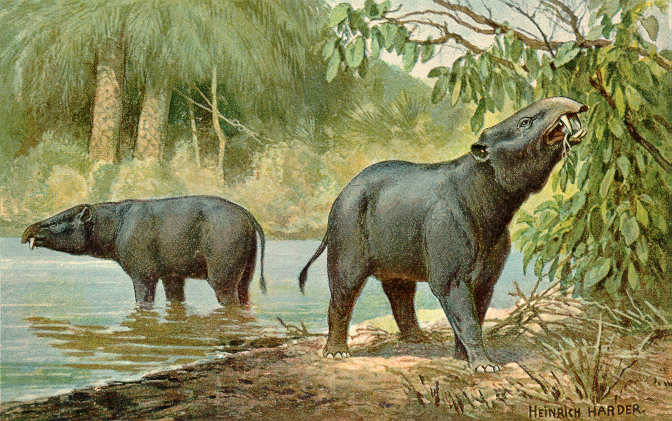 Moeritherium (37-35 million years ago)
Moeritherium (37-35 million years ago)
So here’s an example of an early ancestor of elephants.
But even modern elephants can be divided up into subspecies and regional variants, and even (I think) cultures and language groups, all the way on down to families. And you can work backwards all the way back to the concept of an elephant by averaging all of these variations and unique behaviors to give yourself a pretty accurate picture of an elephant—you know, two tusks, big ears, a trunk, what have you. The idea of ‘containing multitudes’ right?
But at the same time, you have to recognize that all of this cataloging is just a conceptual framework that we are working with, imposed on a spontaneous emerging natural order. Elephants were around for a long time before we started calling them elephants.
So it’s just a tool and think the same can be said of genres, like science fiction. We use genres to catalog literary production, and for authors (and just as much for readers) they form an important part of our self-identity. Like, for example, I can say that I’m a science fiction fan. I can check that box on my Facebook profile and then publishers like Tor can pay money to advertise directly to me, the self-proclaimed science fiction fan.
That’s why they are such a useful tool for marketing, maybe even more useful for marketers than scholars, really. If you love x then you’ll love y.
 |
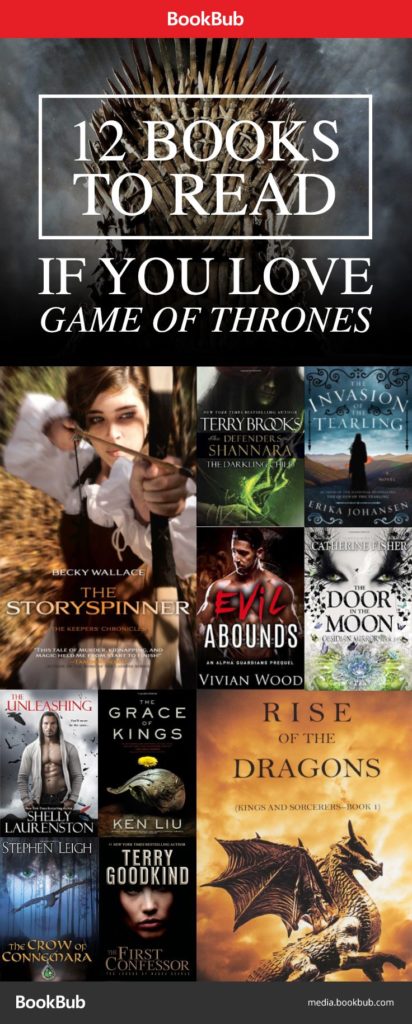 |
 |
So rather than thinking of literature like elephants, it might be more useful to think of it being more like a garden. This is a story from 1941 by a Argentinian author who some of you might already be familiar with, Jorge Borges. This is old trope by new media scholars, and something I was introduced to in an essay by Tom Gunning on the development of comic films, but if you’re not familiar with it already, it’s a really powerful idea.2
In the story, appropriately enough, a Chinese spy needs to convey information to his German handlers during World War I. He tracks down a renowned sinologist, Professor Stephen Albert, who it turns out is studying an unfinished novel by the spy’s ancestor ‘Ts’ui Pên,’ who once served as governor of Yunnan before abandoning his post to build a massive labyrinth and pen the novel which remained unfinished when he was murdered. The Chinese spy, Doctor Yu Tsun, learns that Professor Albert believes that has cracked the riddle of Ts’ui Pên’s novel, and the labyrinth, which was apparently never built. In fact, they are one in the same, the novel being a ‘garden of forking paths’ which attempts to record all of the possible outcomes of a given action:
Rather than being thanked, however, the hapless sinologist (and we’re all a little hapless, if we’re being honest) is murdered in cold blood by Doctor Tsun, who it turns out had been betting on the murder being written up in the paper, which would reveal the location of an English artillery installation—in Albert, a commune in the Somme part of France.
So this gets back to the idea of recursion, which if you’ll forgive me, but my background is in computer programming, so I like to draw on examples from programming.
In programming, if…then loops are one of the main ways that your computer knows what to do when (essentially, which fork to take in a path of branching decisions). Basically, the software waits for a specific condition to be met, and then it runs a specific set of actions. Most programs have loops within loops within loops. It can really be a headache to figure how they all fit together, which is why programmers make flow charts (or ‘decision trees’) like this one:
Or this one, if you’d like to know something more practical:
So to get back to Chinese science fiction (and we are going the very long way around here) we can look at Chinese decision charts for literature, on websites like this one:
Qidian.com
This is Qidian.com, which is one of the most popular portals for online fiction in China today. And here, if you read Chinese you can see your choices (and please, correct my translations here, if I misspeak, I won’t pretend to be an expert in or even remotely familiar with all of these):
玄幻 Chinese fantasy
奇幻 Western fantasy
武侠 martial heroes
仙侠 mythic heroes
都市 urban
职场 workplace
军事 military
历史 history
游戏 games
体育 sports
And way down near the bottom we have:
科幻 science fiction
The others are:
灵异 occult (I think!)
女生网 just for girls
二次元 otaku corner
And we can also look at older genres of Chinese literature which some scholars see as being examples kind of ur-sci-fi / fantasy. A lot of these, you’ve already read about the Mandarin Ducks and Butterflies literature, but a lot of these are basically the antecedents of Mandarin Ducks and Butterflies literature.
Wuxia, as evolved from youxia, is one particularly prominent example which translated especially well to comics and film. But science fiction, in the sense of stories about technological inventions, doesn’t seem to have really gotten adopted by the Mandarin Ducks and Butterflies crowd, as far as I can tell.
Here is one exception, Lu Shaofei and Xu Zhuodai’s Dr. Fix-it, a comic strip which was published in Free Talk, a supplement to the Shenbao which was edited by Zhou Shoujuan, a prominent member of the Mandarin Duck and Butterflies clique. (I’ve written about this comic before, if you’d like to know more about it.)
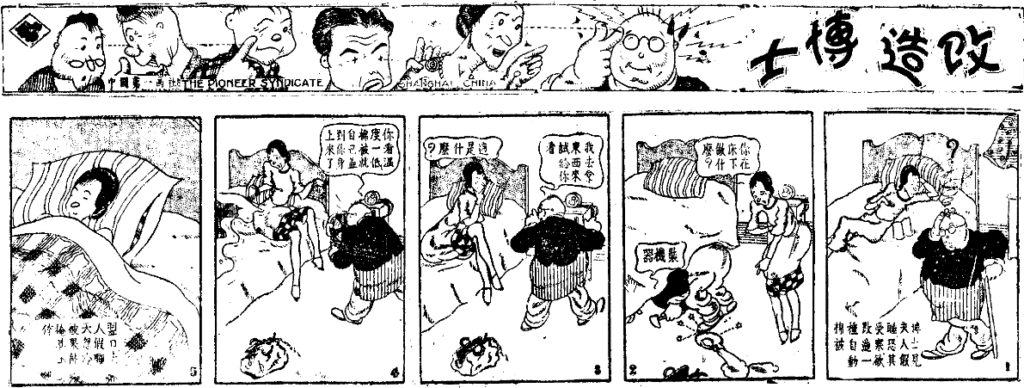 Dr. Fix-it 改造博士, January 1st, 1928, Shenbao 申報.
Dr. Fix-it 改造博士, January 1st, 1928, Shenbao 申報.
Now, although Regina Kanyu Wang’s essay “A Brief Introduction to Chinese Science Fiction” has a nod to a pre-history of sci-fi in China, when she mentions the story of Master Yan building an automaton in the warring states text, the Liezi, right afterwards she jumps ahead to the late-Qing to talk about “science fiction as we know it today.” She doesn’t really try to connect 19th and 20th century science fiction with the earlier forms of fantastic tales, placing the origin of Chinese science fiction in translations of foreign works.
In his essay on Chinese fantasy writing, Jeffery Wasserstrom takes a similar approach, mentioning Tao Yuanming’s fable of the Peach Blossom Spring, written during the Six dynasties period, before jumping ahead to the turn of the 20th century.
Specifically, both Wang and Wasserstom (along with Ou Ning) mention Lu Xun’s 1903 and 1906 abridged translations (via Japanese) of Jules Verne’s From the Earth to the Moon 月界旅行 and A Journey to the Centre of the Earth 地底旅行. Here we can see examples of what they looked like, with some nice imagery on the cover of the latter:
Notice that From the Earth to the Moon is described as a ‘科学小说’ not 科幻小说 as it would be known today.
As Regina Wang points out, “science fiction in China played the role of teaching advanced science as well as democracy from the west.” She doesn’t get into this, but in Chinese there is a specific term that was developed to talk about this concept, the idea of spreading scientific knowledge, known as 科普.
科学幻想 -> 科幻
= science fantasy
科学普及 -> 科普
= science popularization/education
Now, if we do an n-gram of these two terms, you can see a strong correlation between the two:
Since I don’t know much about the corpus these are drawing from, it’s hard to draw more conclusions than that, but check out the sharp declines where you would expect them:
- right around the ten years of the Cultural Revolution, and
- also following the Anti-Spiritual Pollution campaign in the mid-1980s.
As both Regina Wang and Ou Ning point out, the roots of this can be seen not only in translations of Jules Verne, but also in early science fiction by Chinese authors, like Lunar Colony 月球殖民地 by Old Fisherman of the Secluded River 荒江釣叟, which is often described as the first Chinese sci-fi novel, from 1904. It was also illustrated, which is pretty awesome to see:
I’m not 100% sure on this, but I believe that the illustrations were by Wu Youru 吴友如, who was one of the primary artists at the Shenbao’s Touch-stone Studio Pictorial. This is a picture of the Touch-stone Pictorial, which shows you what it looked like:
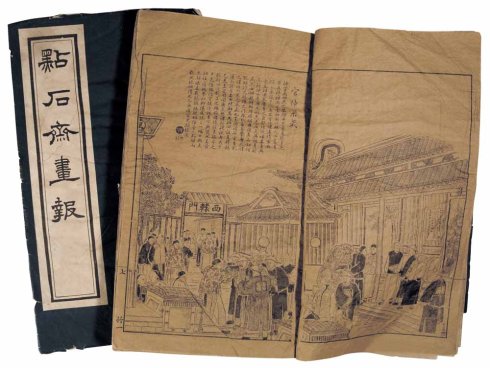 Touch-stone Studio Pictorial 點石齋畫報
Touch-stone Studio Pictorial 點石齋畫報
And here are some examples of the kind images they like to run, many which had to do with new inventions, like trains…
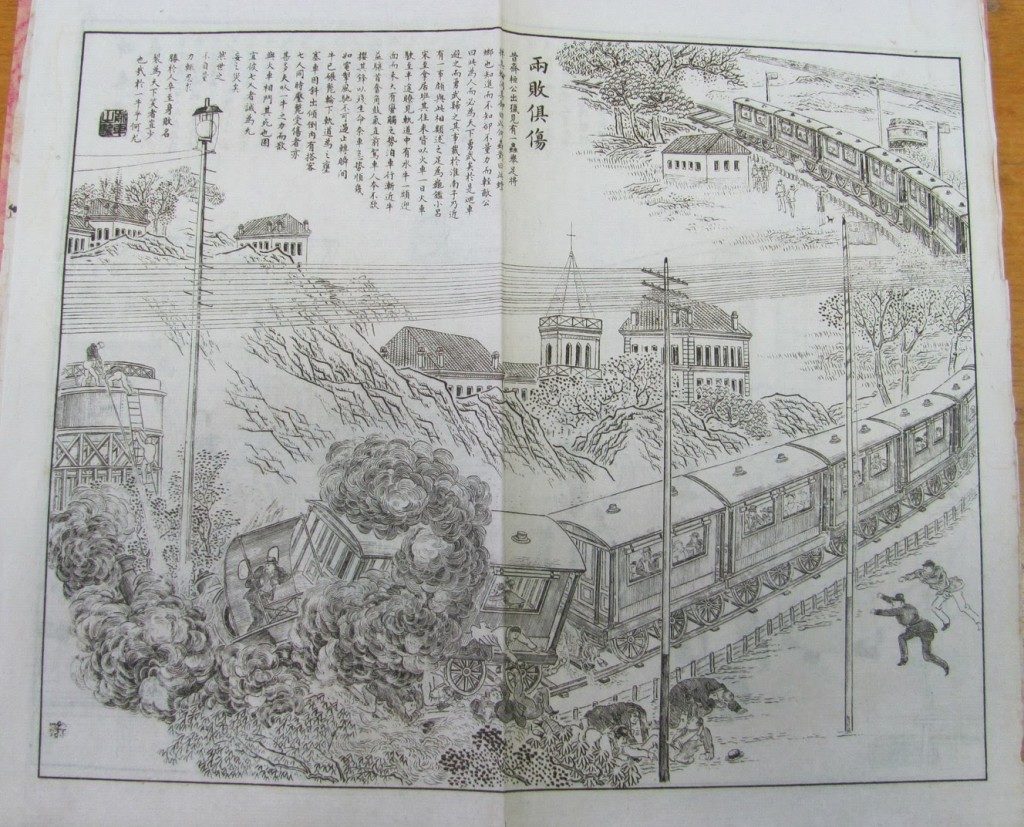 “Lose-lose” 兩敗俱傷. Wu Youru, Pavilion of Flying Shadows Pictorial 飛影閣樓畫報 September, 1890.
“Lose-lose” 兩敗俱傷. Wu Youru, Pavilion of Flying Shadows Pictorial 飛影閣樓畫報 September, 1890.
Submarines…
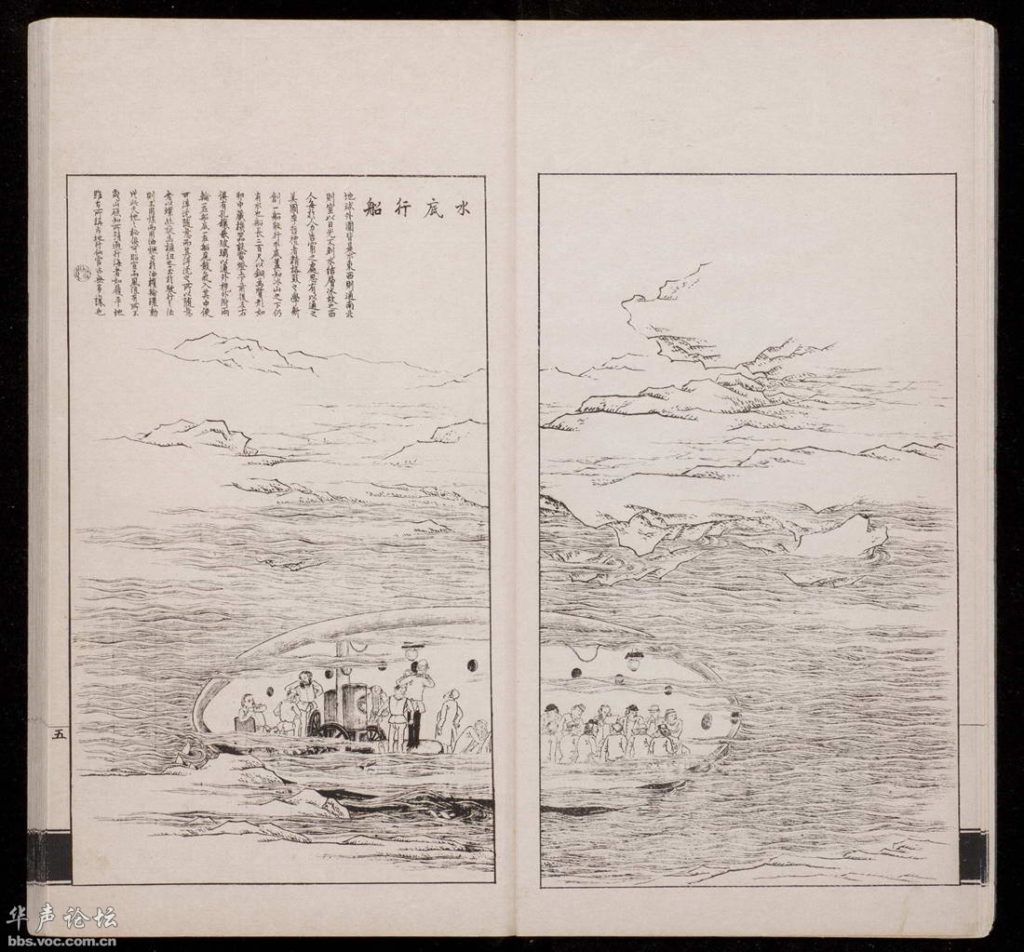 “Underwater Ship” 水底行船. Touch-stone Studio Pictorial, 1884.
“Underwater Ship” 水底行船. Touch-stone Studio Pictorial, 1884.
X-rays…
“The Novelty of the Precious Lens” 寶鏡新奇 Touch-stone Studio Pictorial. September 1887
And hot air balloons. Actually, assault air balloons, which seem like a pretty bad idea, but hey, why not?
 “Air Balloon Destroys an Enemy” 氣球破敌 Touch-stone Studio Pictorial, 1897.
“Air Balloon Destroys an Enemy” 氣球破敌 Touch-stone Studio Pictorial, 1897.
These images (which were lithographs) started to influence wood block prints, and by the turn of the 19th century we see images of war—which like the earlier images, feature new technology pretty prominently.
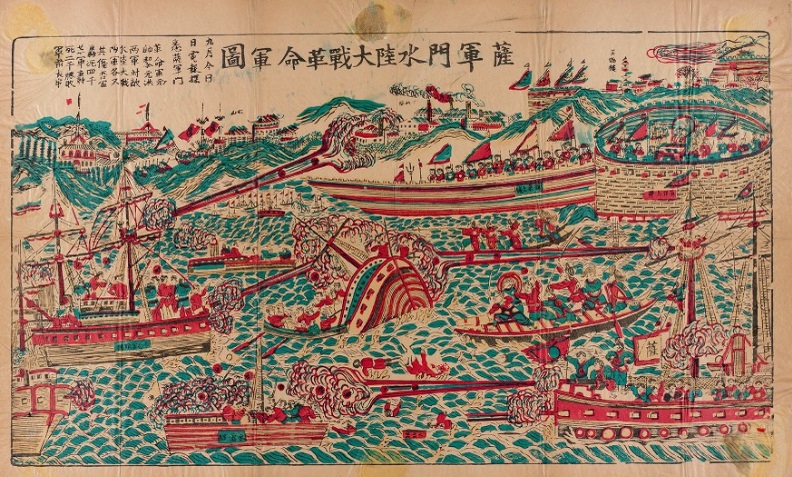 “Battle of Sa Zhenbing’s army against the Revolutionary Army” 薩軍門水陸大戰革命軍圖, ca. 1911.
“Battle of Sa Zhenbing’s army against the Revolutionary Army” 薩軍門水陸大戰革命軍圖, ca. 1911.
I mean, it isn’t exactly sci-fi, in the sense of an adventure story to a strange new land or a miraculous new invention, but they do fit pretty squarely into the rubric of science popularization, which would inform later Chinese sci-fi authors like Ye Yonglie.
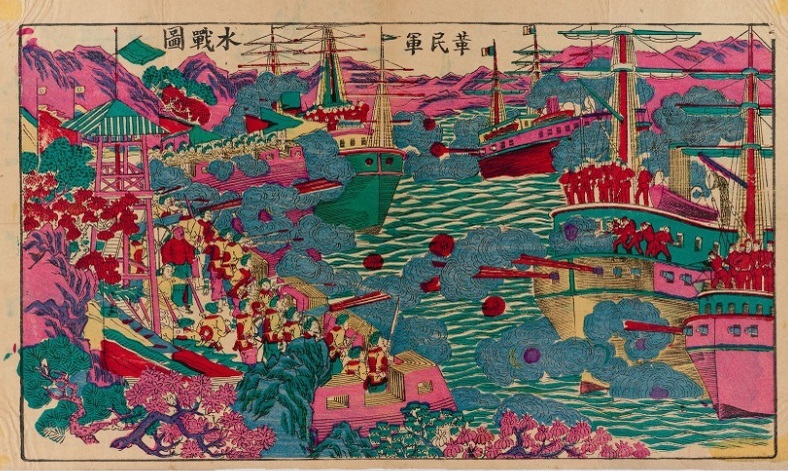 “Naval battle of the Revolutionary Army” 革命軍水戰圖 , ca. 1911.
“Naval battle of the Revolutionary Army” 革命軍水戰圖 , ca. 1911.
This distinction, between science popularization and science fiction, isn’t really the focus of Jeffery Wasserstrom’s piece, which argues for a broader definition of science fiction, which he calls ‘speculative fiction.’
Here’s Dr. Wasserstom’s heuristic to define the boundaries of what he is talking about.
“…speculative fiction authors tend to be interested in “what if” questions. We can also, at least for heuristic purposes [ie ‘for the sake of discussion’], see two strands to this thread:
1)books that posit worlds that are totally different from ours (at least on the surface), and
2)books that take a familiar world and focus on a destabilizing detail (that may well set in motion a chain reaction that alters everything).”
– Jeffery Wasserstrom in “What If…”
What catches my eye here is the way in which Regina Wang, as an insider to Chinese science fiction, is focused on defining what isn’t sci-fi, while Wasserstrom, as an outsider (more or less, he studies contemporary / modern China, but doesn’t specialize in sci fi) wants to expand the definition to include fantasy and other genres.
The above image is mostly just for fun, but it’s from a 1980 Japanese translation of Lao She’s sci-fi novel Cat Country, which was serialized between 1931 and 1932. It would be an example of the first type of sci-fi, working within this particular framework.
Cat Country describes a Taikongnaut whose spaceship crash lands on Mars, which turns out to have been colonized by cat people. It’s basically a not-so thinly veiled satire of 1930s China, with the cat people obsessed with narcotics, fighting each other, and making money for themselves.
It was originally serialized in Modern 现代 from August, 1932 to April, 1933. In August, 1933, an unauthorized paperback version was released. I don’t have a picture of that cover, but here’s the cover to the first authorized edition, published by Daybreak Literature Series 晨光文学丛书 in 1947, after Lao She returned to China:
Clearly not done by some someone who had read the book!3
Like Dr. Fix-it, though, Cat Country gives lie to the idea to idea that sci-fi wasn’t being published in China in the 1920s to 1940s.
Here is another example imagery from this time period with shades of sci-fi, a cartoon by Wang Dunqing, published in Modern Sketch. Notice, too, the military imagery:
 “Western Civilization” 西洋文明 Wang Dunqing 王敦慶 , Modern Sketch 時代漫畫 15, March 1935, 20.
“Western Civilization” 西洋文明 Wang Dunqing 王敦慶 , Modern Sketch 時代漫畫 15, March 1935, 20.
And another one, this time a photo collage:
 “Standard Chinese” 标准中国人, Modern Sketch, Issue #25, January 1936, 22.
“Standard Chinese” 标准中国人, Modern Sketch, Issue #25, January 1936, 22.
Another author worth looking into from this time period (also suggested by Ou Ning), would be Gu Junzheng 顾均正 (1902-1980). Like Ye Yonglie, he started out writing popular science articles, and later moved on to novels.
Now, here is Regina Wang’s discussion of the way that popular literature gets divided up by contemporary Chinese authors:
“In China, the boundary between science fiction (Ke Huan, 科幻) and fantasy (Qi Huan, 奇幻) is not that blurred. However, due to our historical tradition in myths and Kong Fu stories, it is hard to define Chinese fantasy as a whole. You will find it hard to tell Qi Huan (奇幻, fantasy) from Xuan Huan (玄幻, mostly refers to online fiction with Chinese style super natural elements) and Mo Huan (魔幻, mostly refers to fiction with western style magic elements).
“Narrowly speaking, current Chinese fantasy literature excludes themes such as grave robbery (盗墓 Dao Mu, a group of people break into ancient graves, where they come across with ghosts and all kinds of evils, in search of treasures), time-travel (穿越 Chuan Yue, a girl traveled back to ancient dynasties for whatever reasons and falls in complicated relationships with kings, prices, and officers) and Taoism immortality-chasing (修真 Xiu Zhen, a boy experiences various challenges to pursue immortality by Taoism method), which stand as popular genres by themselves.”
– Regina Kanyu Wang (“A Brief Introduction to Chinese Science Fiction”)
I should mention here that Regina Wang has been very active in establishing lines of communication between Anglophone science fiction fandoms, like WorldCon, and their counterparts in China, namely AppleCore and World Chinese Science Fiction Association. She’s also recently launched the Shimmer Project with Singapore-based English to Chinese sci-fi translator Hu Shaoyan, with the goal of promoting Chinese science fiction in translation.
As this opening paragraph of her essay demonstrates, many Chinese sci-fi authors who write 科幻 really resist the idea of lumping their work in with other types of fantasy. This is one objection to ‘speculative fiction’ that Jeffery Wasserstrom seems to have anticipated, with his use of the word ‘heuristic.’
A ‘heuristic’ which is basically a fancy word for ‘working theory.’ It comes from an ancient Greek word meaning to ‘find’ or ‘discover’ and what’s really powerful about a heuristic is that we can use to build our own genres, or bodies of literature, rather than being limited to how authors classify their own work, or how critics and scholars have traditionally separated things out.
The reason why I think Dr. Wasserstrom points this out, is because he wants to remind us that there is a difference between intrinsic categories of self-definition and extrinsic categories of…well, categorization.
So we’ve already had Wasserstrom and Wang’s heuristics, which more or less line up with the typical contemporary Chinese and American attitudes toward sci fi—where China goes narrow, America goes broad. We’ve actually seen a backlash against this Western trend towards a broader definition of sci-fi, with groups like the Sick Puppies and Gamergate who have hijacked award ceremonies and made a lot of noise about what is and isn’t sci-fi.
But again, what is and isn’t sci-fi is both about identity (does the author identify as a sci-fi author?) and also about heuristics, about finding ways to sort and recommend (ie market) books.
To give another (much older) example of this, here is Issac Asimov’s heuristic:
Gadget sci-fi: Man invents car, holds lecture on how it works. -> 科普
Adventure sci-fi: Man invents car, gets into a car chase with a villain. -> 科幻
Social sci-fi: Man invents car, gets stuck in traffic in the suburbs. -> 社论
– Isaac Asimov “Social Science Fiction” in Modern Science Fiction (1953), as paraphrased by TV Tropes.
Now, I happen to think this lines up pretty well with Chinese sci-fi, with gadget sci-fi and adventure sci-fi correlating pretty closely with 科普 and 科幻, respectively. I’ve marked social sci-fi with 社论, which means ‘op-ed,’4 with Cat Country being the most obvious example:
Incidentally, Liu Cixin’s Three-Body Problem, which some of you may have already heard of or read, would be another example of the third category, I think, especially if we consider its treatment of the Cultural Revolution.
So in a very round-about kind of way, this brings us back to Ye Yonglie, that sci-fi author I said I would be talking about at the beginning of my talk:
 Ye Yonglie 叶永烈 (b. 1940) in the late 1970s.
Ye Yonglie 叶永烈 (b. 1940) in the late 1970s.
Ye got his start writing popular science articles for Ten-Thousand Whys in 1960, when he was only 20:
This was during the cultural thaw which took place between 1959 and 1963, with the failure of Great Leap Forward, and prior to the Socialist Education Movement (also known as the Four Cleanups), a precursor to the Cultural Revolution of 1966.5
So to understand Ye, I’ve been looking at the comics he might have been reading when he was a kid, stuff from the 1940s up through the 1950s. A lot of it is wuxia, which I can share with you if you’re interested, but here are couple of sci-fi ones that seem pretty relevant to what we’ve been talking about.
Military themes…
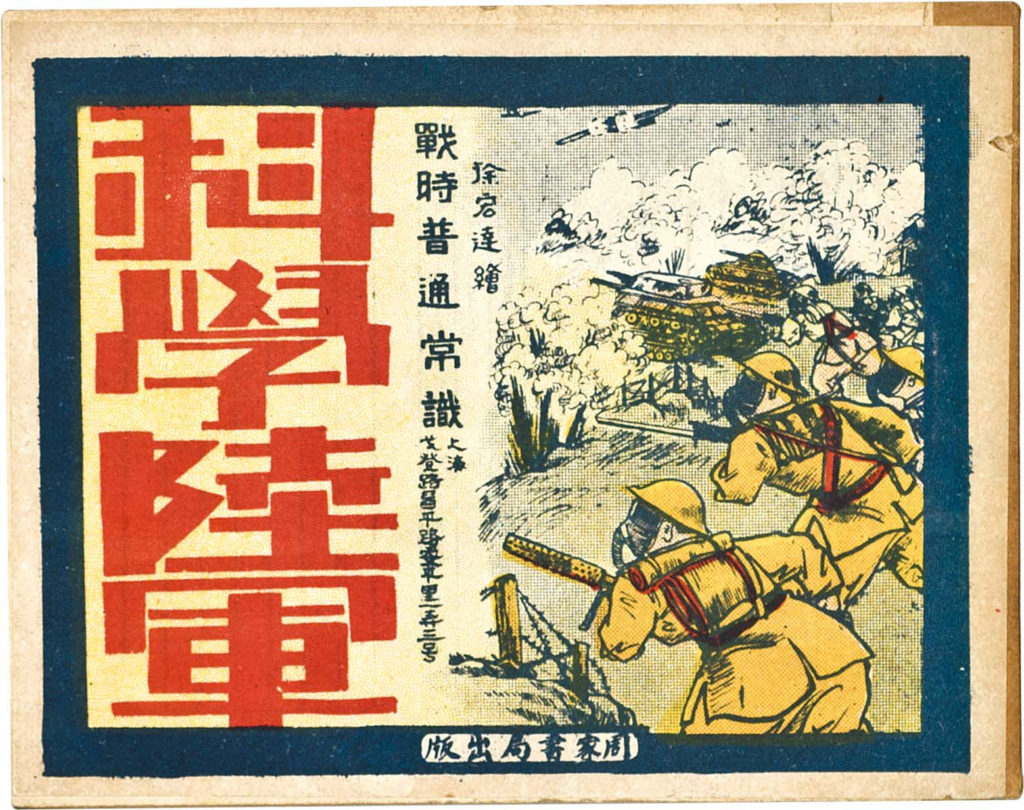 “Scientific Army” 科学陆军 Xu Hongda 徐宏达, Zhou Family Press 周家书局, 275 pages, late 1940s.
“Scientific Army” 科学陆军 Xu Hongda 徐宏达, Zhou Family Press 周家书局, 275 pages, late 1940s.
Flying cars…
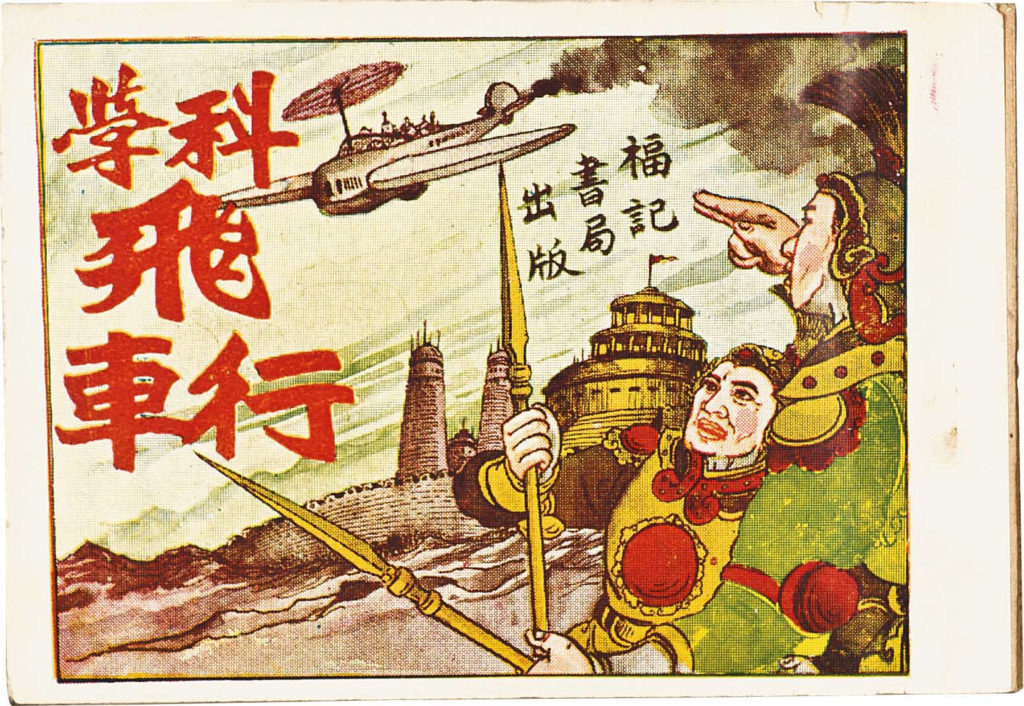 “Scientific Flying Car” 科学飞行车 Wang Yushan 汪玉山, Good Omen Press 福记书局, late 1940s.
“Scientific Flying Car” 科学飞行车 Wang Yushan 汪玉山, Good Omen Press 福记书局, late 1940s.
Robots…
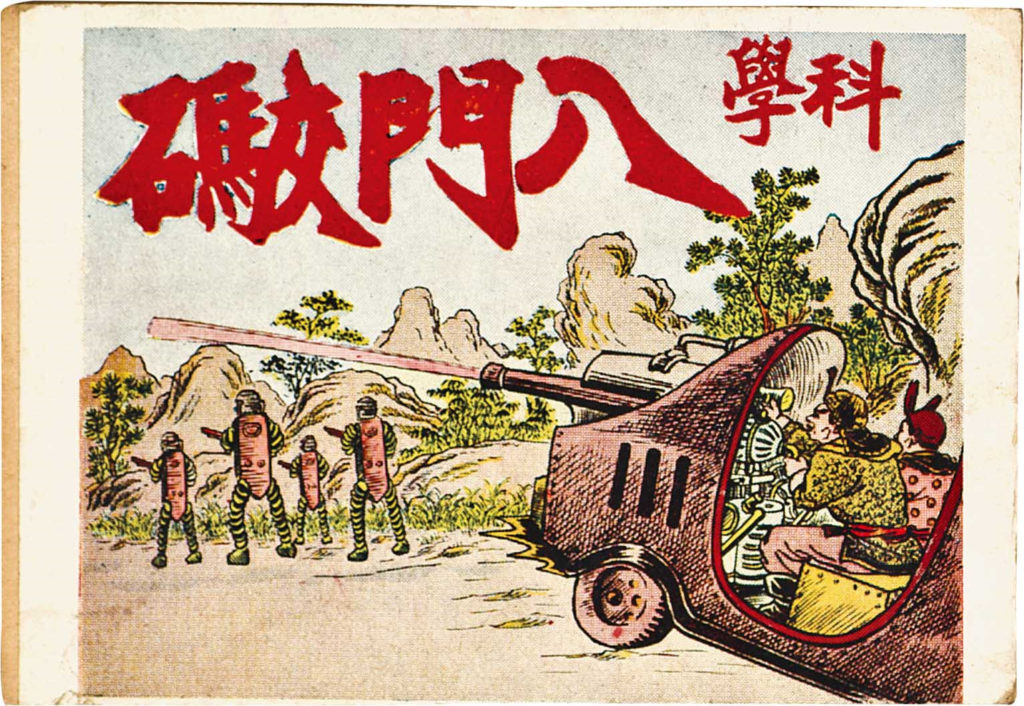 “Scientific Eight-Gun Cannon” 科学八门炮, Awakening 醒吾, late 1940s.
“Scientific Eight-Gun Cannon” 科学八门炮, Awakening 醒吾, late 1940s.
Jet packs…
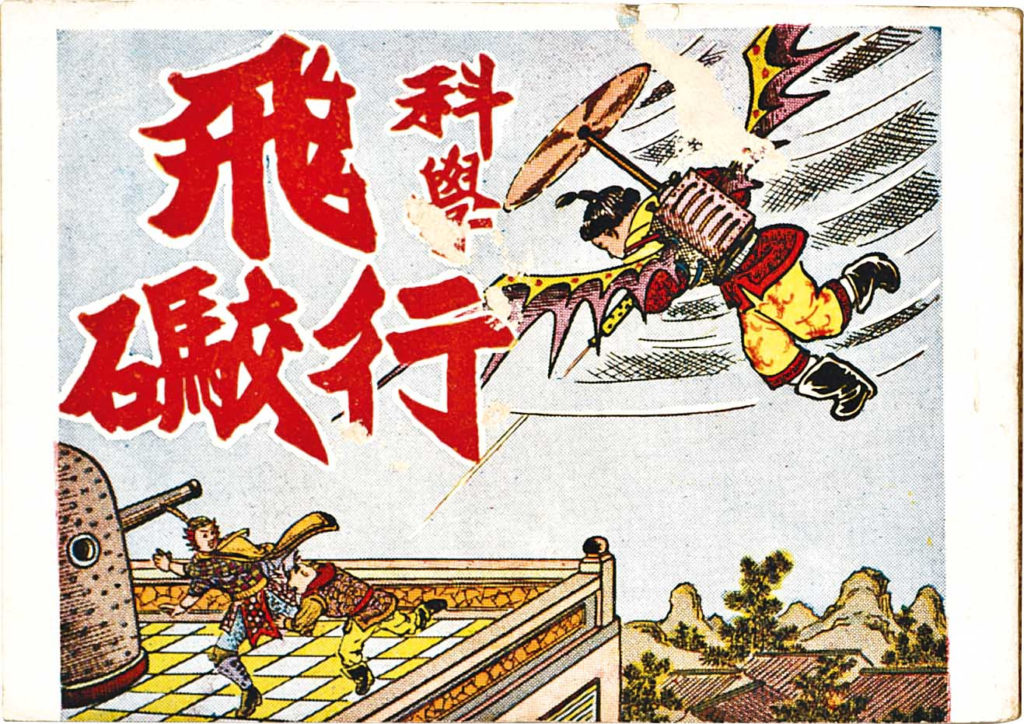 “Scientific Flying Cannon” 科学飞行炮 Awakening 醒吾, late 1940s.
“Scientific Flying Cannon” 科学飞行炮 Awakening 醒吾, late 1940s.
And clocks. Not sure what to make of this one:
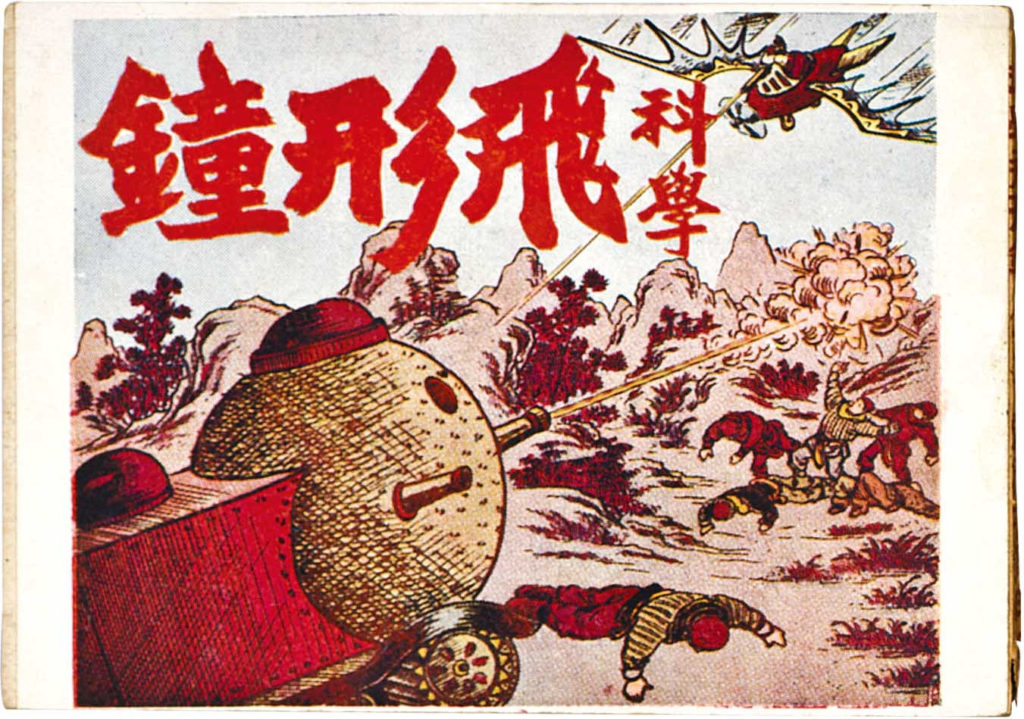 “Scientific Flying Clock” 科学飞行鈡 (Part 1 of 4), Xue Feng 雪封, late 1940s.
“Scientific Flying Clock” 科学飞行鈡 (Part 1 of 4), Xue Feng 雪封, late 1940s.
And here is some of the stuff Ye would have seen in the mid to late 1950s, with the onset of the Great Leap Forward. Giant turnips…
And giant pigs…
Inspiring shades of the elephant parable we began with, the above appears to have been inspired by a famous short story by Chi Shuchang 迟书昌, “Elephants with Their Noses Cut Off,” of which several versions were published in 1956, both lianhuanhua:
And also children’s books:
Ye Yonglie may have also been able to read some pretty classic sci-fi, too, in the form of Zheng Wenguang’s 鄭文光 (1929-2003) novels:
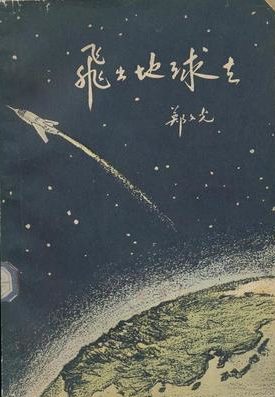 Leaving the Earth 飛出地球去 (1957) |
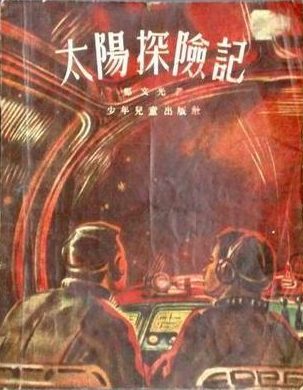 Exploration of the Sun 太陽探險記 (1955) |
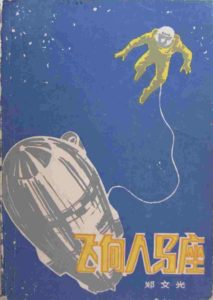 Flight to Sagittarius 飛向人馬座 (1978) |
Above we have Leaving the Earth from 1957 (notice that the coastline is of East Asia, rather than North America), but he had two earlier books, From Earth to Mars 從地球到火星 from 1954, and Exploration of the Sun 太陽探險記 from 1955. Leaving the Earth was followed by Builders of Mars 火星建設者 in late 1957, but his next book, Flight to Sagittarius 飛向人馬座, didn’t appear until 1978, after the end of the Cultural Revolution. (As a research fellow of the Beijing Astronomical Observatory, Zhang was targeted during the Cultural Revolution, a fate narrowly avoided by the fictional protagonist of the first volume of The Three-Body Problem, Ye Wenjie.)
And here is Ye Yonglie’s magnum opus, Smarty Pants Visits the Future 小靈通漫游未來, which coincidentally enough appeared in the same year. This is actually a 1980 adaptation of that original story, which was first published in 1978:
Ye Yonglie survived the Cultural Revolution publishing autobiographies of CCP leaders, and later became famous for his travel books. In many ways he came to exemplify the polemical sci-fi author: using science at times to bolster the power of the party, while at other times using the same tools to criticize. In particular, he got into trouble with some his later work, which dealt with the politics of scientific research in the CCP, and AIDs in Xinjiang.6
My hope is to get permission to translate Smarty Pants Visits the Future from Ye himself, and also to ask some of the questions I’ve been talking about today. If you were in my shoes, what questions would you ask Ye Yonglie, regarding the past and future development of sci-fi in China? And what else do you want to know about Chinese science fiction? What heuristics do you apply to your reading of this literature?
Thank you!
- Among them, rather memorably, Hannibal Lector, in the 1991 film Silence of the Lambs: “First principles, Clarice. Simplicity. Read Marcus Aurelius. Of each particular thing ask: what is it in itself? What is its nature? What does he do, this man you seek?” [↩]
- See “Crazy Machines in the Garden of Forking Paths: Mischief Gags and The Origins of American Film Comedy” from Kristine Brunovska Karnick & Jenkins (eds.), Classical Hollywood Comedy (New York: Routledge, 1995), pp. 87-105. [↩]
- The best version I’ve found, though, is this one. [↩]
- Very open to suggestions for a better word here. 諷刺 or ‘satire’ is a more common description of these kinds of books in Chinese, but I wanted to point out that not all social sci-fi uses humor or hyperbole to discuss social problems. [↩]
- Qiliang He’s research into pingtan, a form of oral storytelling, has shown that there was economic component as well as a political one to the PRC cultural thaw of the early 1960s, as state-owned troupes were privatized into worker-owned collectives. See Gilded Voices: Economics, Politics, and Storytelling in the Yangzi Delta (BRILL, 2012), p. 167-181. [↩]
- For a full biographical sketch of Ye and his work, see The Encyclopedia of Science Fiction. [↩]
